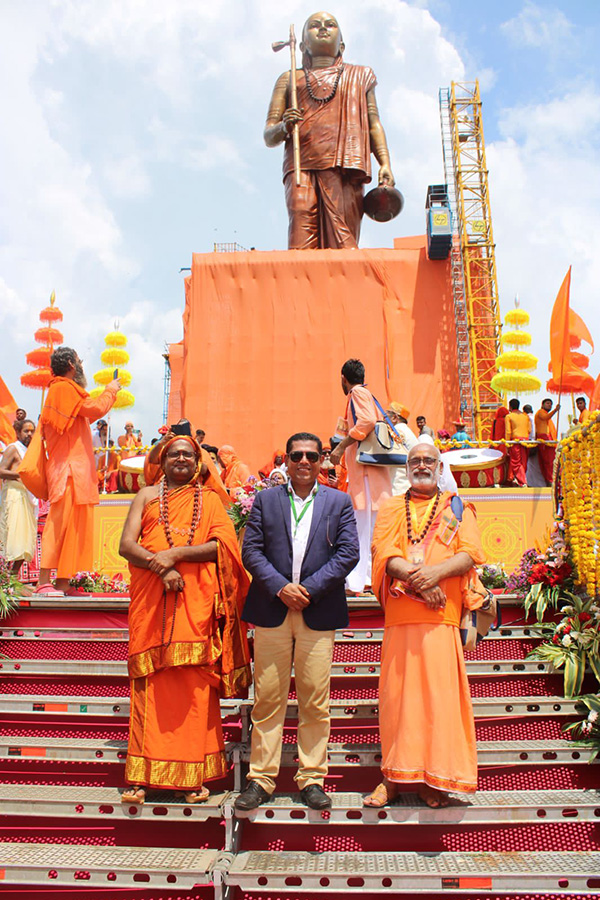
Casting of 108-foot-tall statue of Adi Shankara in India
Adi Shankara (788-820) advocated the philosophical thought of "Brahman and Atman are one", believing that the highest reality in the universe, "Brahman", is essentially the same as the individual soul, "Atman". To reflect this profound concept, the Jiangxi Tongqing design team studied Shankara's "Brahma Sutra Commentary" in depth, and transformed the philosophical connotation into visual language: the statue is presented in a meditative posture, symbolizing the ultimate realization of "Brahman"; the facial expression is solemn and detached, with eyes lowered and staring at the palm, which is in line with the practice of "introspection of self-nature"; the folds of the clothes adopt the spiral pattern of traditional Indian "Sari" clothing, but are reconstructed with flowing metal lines, which not only retains cultural symbols, but also gives modern sculptures a dynamic beauty.
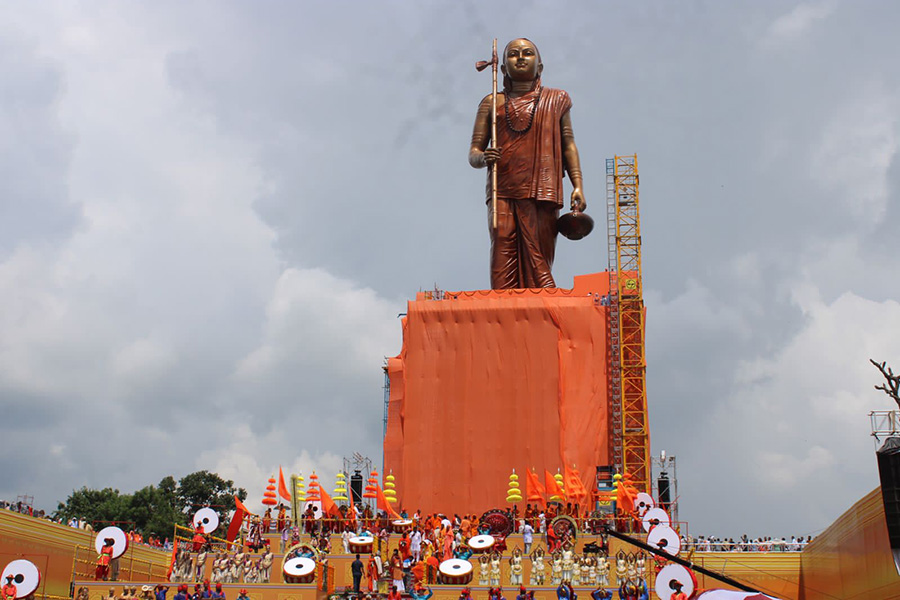
The design of the statue base is even more mysterious: the base is supported by an eight-petal lotus, each petal is engraved with a Shankara motto, and the font is selected from the ancient Indian Paramita, which can only be seen when illuminated at a special angle. This design is not only a tribute to the Hindu "Mandala" universe model, but also reflects Jiangxi Tongqing's extreme attention to cultural details.
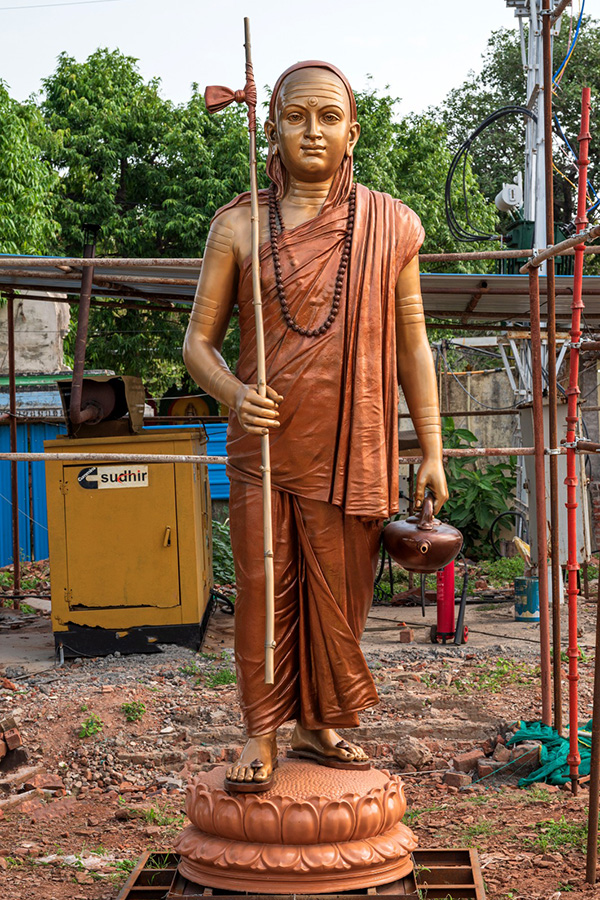
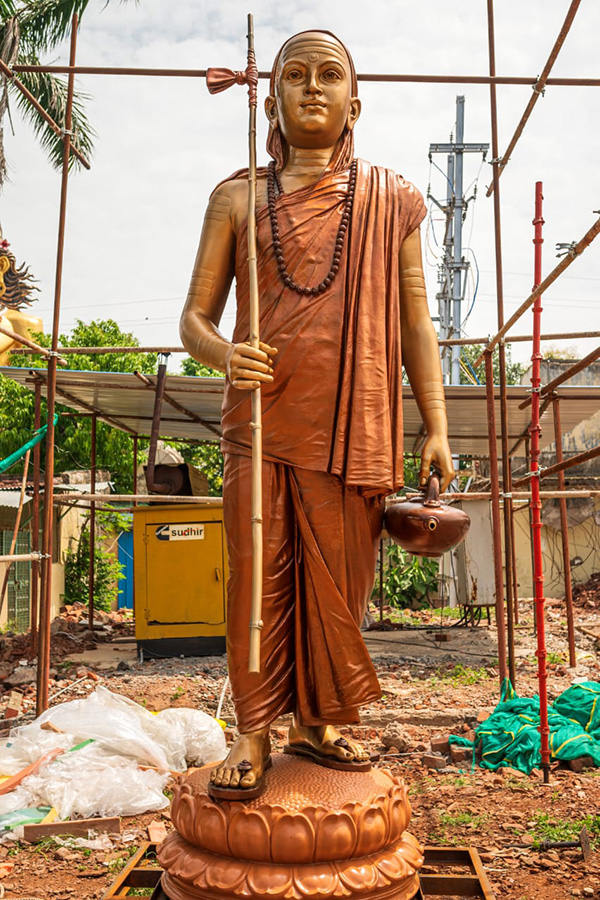
The casting process of this 12.5-meter-high and 85-ton bronze statue is a model of modern metal craftsmanship. The Tongqing team in Jiangxi Province used the "segmented casting + overall welding" technology to decompose the statue into 37 modules for separate casting, and then achieved millimeter-level docking through a laser positioning system. Among them, the model of the Vedanta Sutra held by Shankara is only 3 mm thin, but more than 2,000 Sanskrit scriptures need to be etched on the surface. The "micro-carving electrolytic etching method" independently developed by the team successfully broke through the technical bottleneck.
Even more commendable is the antique treatment on the surface of the statue. In order to reproduce the unique "Patna green rust" of ancient Indian bronze statues, engineers spent 9 months to develop a multi-layer oxidation coloring process: first, an ammonium sulfide solution is used to form a bottom oxide film, then nano-scale copper oxide particles are sprayed, and finally a mixture of natural beeswax and plant dyes is manually applied, so that the statue presents a mottled sense of time in the sun, as if it has been standing here since the Ganges era.
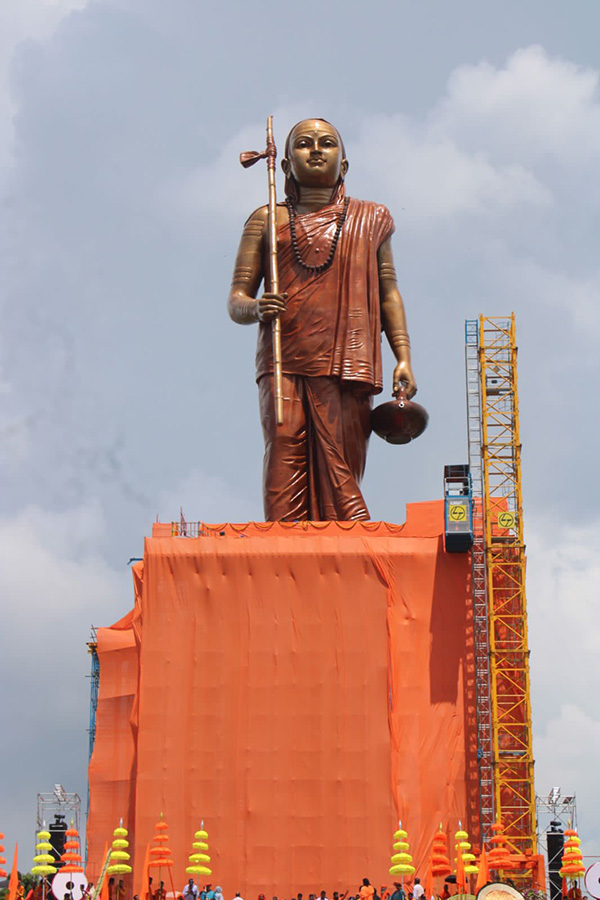
During the installation of the statue, the Jiangxi Tongqing team faced a dual challenge: ensuring the safety of the structure and integrating it into the Hindu ritual norms. To this end, the engineering team specially designed a "modular lifting system" to reserve a removable altar in the chest area of the statue, which not only meets the needs of believers to offer flowers and worship, but also avoids damaging the overall structure. At the inauguration ceremony of the statue in 2023, when the Hindu priest sprinkled the holy water of the Ganges on the statue, the water spray device hidden in the base was started simultaneously, and the water mist flowed slowly along the folds of the statue's clothes. This "miracle" scene amazed tens of thousands of believers on the scene.
The completion of this statue is not only a proof of the technical strength of Jiangxi Tongqing Metal Crafts Co., Ltd., but also the crystallization of the in-depth dialogue between Chinese and Indian cultures. From the Indian "Statue of Unity" to the Adi Shankara Memorial, Jiangxi Tongqing uses metal as a pen to write an artistic legend belonging to Made in China in a cross-cultural context. As Shankara said in "The Treatise on Self-Knowledge", "Truth has no borders, and wisdom is universal." This bronze philosopher standing on Mount Mandatta is telling the world, beyond language, about mankind's common pursuit of spiritual eternity.
